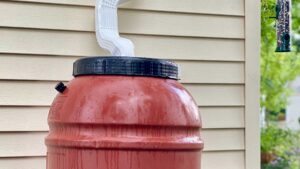Cleaning your gutters may not be glamorous, but it can save you thousands in repairs.
For Florida homeowners, gutter cleaning is a critical part of home maintenance. With year-round rain, falling leaves, and hurricane-season debris, even a small clog can lead to major water damage. Overflowing gutters can flood landscaping, rot your fascia, attract pests, and even weaken your home’s foundation.
The good news? You can tackle the job yourself safely and effectively with the right tools and know-how. This guide walks you through how to clean your gutters like a pro (and when to call one).
How Often Should Gutters Be Cleaned in Florida?
At minimum, Florida homeowners should clean their gutters twice a year—once in spring and again in fall. However, if your home is surrounded by trees or you’ve just weathered a big storm, more frequent cleaning may be necessary.
Signs your gutters need cleaning:
- Water spilling over the sides during rain
- Visible plant growth or debris buildup
- Mosquito activity or standing water
- Sagging or disconnected sections
Safety First: What You’ll Need
Before you grab a ladder and jump in, take time to gather the right gear.
✅ Tools & Supplies:
- Sturdy extension ladder (with stabilizer or standoff arms)
- Work gloves
- Safety glasses
- Garden trowel or gutter scoop
- Bucket or tarp for debris
- Hose with spray nozzle
- Optional: leaf blower or wet/dry vacuum with gutter attachment
⚠️ Safety Tips:
- Always use a ladder on stable, level ground
- Avoid leaning against gutters—they can bend or detach
- Never climb on the roof unless trained to do so
- Work with a partner if possible
- Don’t overreach—move the ladder instead
Step-by-Step Gutter Cleaning Guide
Step 1: Set Up Your Ladder Safely
Choose a day with dry weather and little wind. Place your ladder securely on level ground, and if possible, have someone hold it steady as you climb.
Step 2: Remove Large Debris
Start at the downspout and use a gutter scoop or your gloved hands to remove leaves, sticks, and sludge. Drop debris into a bucket or onto a tarp below.
Step 3: Flush the Gutters with Water
Once the visible debris is gone, spray water through the gutter using a hose. This helps clear out small particles and checks for proper flow.
Step 4: Check the Downspouts
If water backs up at the downspout, you may have a clog. Use your hose, a plumber’s snake, or a gutter cleaning attachment to break it up. In some cases, you may need to disassemble the downspout to clear the blockage.
Step 5: Inspect for Damage
As you clean, look for:
- Cracks or rust
- Loose brackets or sagging sections
- Signs of mold, mildew, or pests
Catch these issues early to avoid more expensive repairs later.
When to Call a Professional
DIY gutter cleaning is doable for many homeowners, but it’s not always the best (or safest) option. You should consider calling a pro if:
- Your home is two stories or taller
- You’re not comfortable working on ladders
- The gutters haven’t been cleaned in years
- You notice leaks, sagging, or damage
- You want to install gutter guards and reduce future cleaning
At Sunrise Gutters & Exteriors, we offer safe, thorough cleanings—and we’ll inspect your entire system for issues while we’re at it.
Tips to Make Cleaning Easier Next Time
- Install gutter guards to block debris and reduce cleaning needs
- Trim overhanging branches near the roof
- Check your gutters after every major storm
- Set calendar reminders for seasonal maintenance
Preventive care now saves you from dealing with bigger problems during hurricane season.
Final Thoughts
Gutter cleaning may not be the most exciting chore, but it’s one of the most important—especially in Florida. Whether you do it yourself or hire a professional, regular cleaning protects your home from costly water damage and keeps your system storm-ready year-round.



